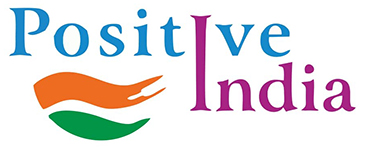

Positive India:New Delhi:
The Ministry of Heavy Industries here today announced the release of SOPs under the PLI Auto scheme to testing agencies. With this, the applicants under the scheme can now submit their applications for the testing and certification of AAT products (both OEMs and components), which will help them qualify for incentives under the PLI Auto scheme.
With this move, the Union Minister of Heavy Industries, Dr. Mahendra Nath Pandey, said that the Ministry is trying to align itself with the Prime Minister’s vision of Aatmanirbhar Bharat, and these SOPs will not only help to achieve that but will also help to increase the manufacturing foothold. With this, the ministry aims to boost the domestic manufacturing sector and reduce dependence on imports, thereby creating more job opportunities for Indians. The government is committed to promoting skill development and entrepreneurship in the country, and this initiative will help in achieving that goal. He also added that it would contribute to the overall economic growth of the nation. The scheme is expected to attract significant investments and help India become a global hub for automobile manufacturing.
The Ministry of Heavy Industries (MHI) notified the Production Linked Incentive (PLI) Scheme for Automobile and Auto Component Industry in India (PLI-AUTO Scheme or the Scheme) on September 23, 2021, with a budgetary outlay of 25,938 crores. The PLI-Auto Scheme proposes financial incentives to boost domestic manufacturing of advanced automotive technology (AAT) products and attract investments in the automotive manufacturing value chain. The scheme has two parts: Champion OEM, which will make electric or hydrogen-powered vehicles, and Component Champions, which will make high-value and high-tech components.
The objectives of the PLI Scheme:
The key objectives of the Production Linked Incentive (PLI) Scheme for Automobiles and Auto Components are to provide financial incentives to boost domestic manufacturing of advanced automotive technology products and attract investments in the automotive manufacturing value chain.
Its prime objectives include overcoming cost disabilities, creating economies of scale, and building a robust supply chain in areas of advanced automotive technology products.
The scheme also aims to generate employment in the country.
To facilitate the automobile industry’s move up the value chain into higher-value-added products
MHI, on November 9, 2021, notified the categories of 19 AAT vehicles and 103 AAT components that shall be covered under the scheme. These components are either advanced or latest-technology automotive components, those for which the supply chain is nonexistent in India, or both. Thus, with this scheme, India will be able to increase its share in the global advanced technology and automotive supply chains.
Domestic Value Addition (DVA):
According to the scheme guidelines, applicants must achieve a DVA of 50% to claim incentives under the scheme. The auto companies and component makers are required to calculate and present the DVA across their supply chain and present these details to the testing agencies. This is being done to promote the Make in India campaign and boost domestic manufacturing of advanced automotive products.
Committee for making SOP:
A committee headed by Director ARAI Pune was constituted with members comprising all testing agencies, viz., iCAT Manesar, NATRAX, Pune, GARC Chennai, and IFCI (PMA for PLI Auto Scheme), to make an SOP for calculating DVA, or domestic value addition. Accordingly, with this sharing of knowledge and views among the various stakeholders, the committee drafted the SOP after deliberating on all the suggestions received from the stakeholders. Consultations were held with all 85 applicants for the PLI scheme. These include 18 OEMs and 67 auto component manufacturing companies. The list of these companies is attached.
Process of consultations:
Through stakeholders’ consultations and continuous discussions, the industry shared various representations and suggestions. Further, the draft SOP was also shared with the stakeholders, including applicant companies, from time to time for their input and feedback. Further, the Committee also carried out a trial DVA calculation exercise with some of the OEM and component applicants on a selective basis.
The cross-sectoral learnings from implementing PLI schemes have been adopted by implementing the experience gained by other ministries and departments. These included the Department of Pharmaceuticals (DoP), MNRE, MeiTY, the Department of Expenditure, the Department of Pharmaceuticals, the Ministry of Steel, and other concerned ministries.
After 3 rounds of detailed stakeholder consultations, the committee has come up with a draft SOP consisting of a desk appraisal and field visits to the applicants and their suppliers’ manufacturing facilities, a techno-commercial audit of the applicants, and a periodic surveillance assessment, which would provide a greater level of assurance to all the stakeholders. The SOP specifies procedures for the same in sufficient detail.
The SOP has now been released by the testing agencies, and this will allow the applicants under the PLI scheme to apply for approval of AAT products (both OEMs and components).
Ease of doing business:
The Government of India, with a view to promoting ease of doing business, has taken care to devise simple procedures with the minimum paperwork needed to file an application under the PLI scheme.
A direct supplier to an OEM is called a “tier 1 supplier. Tier 1 suppliers are known as Tier 2 suppliers, and so on. The information with regard to imports up to the Tier 3 level has to be authenticated by the applicants up to the Tier 1 level only. However, no documents up to Tier 3 will be required to be submitted at the time of filing the application. The declarations submitted by the applicants will be adequate for most of the requirements under the scheme.
This will reduce the compliance burden on the applicants and promote faster applications and the disbursal of incentives under the scheme.
Power to remove difficulties:
In case there are unforeseen circumstances preventing compliance with all provisions contained in the SOP, the testing agencies have been given the power to relax the provisions of the SOP. This will enable a flexible approach to the resolution of issues that may arise in the complex supply chain of the automotive industry.


